Most B2B marketing teams are working hard. But how much of that effort is building long-term value?
Let’s put it another way: if you mapped your team and external agencies’ energy against your actual business impact, would the two align?
That’s a question more B2B marketing leaders are starting to ask. Because in the pursuit of reach, engagement and “share of voice”, marketing teams often find themselves pouring disproportionate effort into channels they don’t control and quietly under-leveraging the ones they do.
It’s not that social, PR or influencer channels don’t matter. Far from it. But when budgets tighten and performance is under scrutiny, the surface-level visibility of earned media can obscure a deeper issue: are we building anything we can own, sustain and scale and does it support how buying actually happens in complex B2B environments?
Visibility does not always equal value
For many B2B tech and telco brands, visibility isn’t the bottleneck. Between social content, partnerships, thought leadership, and events, the signals are out there. The question is whether those signals lead anywhere meaningful. And whether the brand has enough control over where they land.
Owned assets like your website, your newsletter, your database are often treated like the digital plumbing that sits behind the scenes. But these are the environments where trust compounds and conversion actually happens. If earned is where you spark awareness, owned is where you convert attention into action.
Yet we repeatedly see situations where content gets optimised for the scroll, not the journey.
Social media gets attention but remains disconnected from wider marketing and PR efforts. Campaigns are visible but not resonating with the right people. The result? Expensive activity that’s hard to tie back to commercial intent.
Earned media isn’t the problem. Misapplied earned media is.
There’s a common perception in B2B that PR and earned tactics are expensive, fluffy, or only worthwhile once you’ve hit a certain scale. That’s not just outdated, it’s somewhat misleading.
Some of the most effective earned activity we’ve seen has come from non-category leading (but very ambitious) scaling brands. Not because they had bigger budgets, but because they had focus. They were clear on three things:
- Who they needed to reach
- What they needed to say
- And why should those people care right now
That clarity turns earned media, especially PR, into a commercial asset.
So ask yourself: is your current PR strategy helping you show up in the right places, to the right audience with the right message, or just keeping you visible in a way that looks good on paper?
All too often, earned efforts are spread thinly across generic outlets. The intent is good. The targeting isn’t. Activity becomes performative, driven more by presence than purpose.
And that includes social media. Yes, the content may live on your profile (and technically be “owned”), but reach, attention and engagement are all algorithmically controlled. That makes social, in practice, an earned channel.
Organic social is also often treated as low-cost because there’s no media spend involved. But when you add up the planning, the creative, the rounds of internal feedback and the effort it takes to keep the feed alive, suddenly, it’s not so cheap.
In our view, organic social effort works best when it’s played in concert with other channels. When it leads somewhere. When it’s anchored in a wider ecosystem that plays out across owned touchpoints like your website. Without that, you’re investing in awareness, but not momentum.
This is where waste creeps in. Not because the channels are wrong, but because the energy behind them is misdirected.
We’ve seen B2B brands secure tier-1 media coverage by investing in tightly focused research. Rather than relying on big budgets, they created localised, relevant data that aligned with broader media conversations, giving journalists something genuinely useful to cover. That clarity of insight delivered more than spend alone could.
Treat earned like a mass broadcast and you’ll burn through energy fast. Treat it like a strategic engagement layer and it becomes a force multiplier.
Owned channels are still underleveraged and undervalued
There’s a strange irony at play in B2B marketing right now. As the industry doubles down on creator-led content, B2B influencer partnerships and short-form video, many brands are quietly underinvesting in the very channels where conversion, influence and long-term value creation actually happen.
TL:DR: The earned and paid front door is looking fabulous, but the owned house inside is still unfinished
We’ve seen it manifest as:
- Thought leadership pieces stuck out on their own, with nowhere meaningful to direct readers to find out more or engage further with the brand
- Social content driving good click-throughs and engagement, only to land users on vague, confusing or bloated landing pages
- Campaigns with great assets but no distribution plan, relying solely on paid or reach-based platforms for traction
What all of these point to is a deeper operational issue: marketing effort is being spent, but not compounded.
And often, the weakest link is the website or owned content hub, the very places prospects land when they’re ready to engage.
If you haven’t reviewed your website in the past six months, not just from a brand lens, but from a buyer’s journey lens, you might be pouring attention into visibility without giving people a reason to stay.
Owned channels like your website, your newsletter, your CRM, your resource hub are the places where you build consistency, signal strength and brand memory. They’re where you get to set the rules, shape the journey and nurture trust without having to rely on algorithmic volatility or paid amplification.
And yet, in the pressure to show up everywhere, many teams are unintentionally treating their owned infrastructure as hygiene, the plumbing behind the scenes, rather than what it really is: a long-term commercial asset.
So… earned vs owned?
If we had to call it, we’d say this: most B2B brands are still underinvesting in owned and overestimating the standalone value of earned.
Earned media isn’t a waste. Nor are they specifically high-effort channels like social media. But when they become catch-all defaults, driven by habit, visibility metrics, or the perception of being “cheap”, the opportunity cost creeps in fast.
That’s the heart of the issue. We’re not anti-earned (as B2B tech and telco PR specialists, it’s a huge part of our work with clients!). We’re pro-alignment.
The more valuable question isn’t “should we do more earned or more owned?” It’s:
- Where are we building an audience where we don’t have to rely on a 3rd party to engage?
- Where are we letting ourselves down in the buyer journey? (We will die on the hill that websites are a hugely underappreciated asset, even 20+ years on from the dawn of the internet)
- Where are we wasting effort on reaching people outside of our target audience?
Refocus your earned efforts. Recommit to your owned infrastructure. That’s not a compromise. It’s a more durable way to scale.
We help senior B2B marketing teams get an experienced external view on their marketing activity and redirect effort into smarter places, not more places.
Want to sense-check where your energy is going? Let’s talk.

Martina Po, Senior Account Manager
Martina Po, a Senior Account Manager at onebite, brings over 8 years of experience in PR, events, and marketing. Specialising in raising awareness for clients in B2B UK tech publications, Martina has successfully led numerous profitable PR and marketing campaigns and events, establishing our clients’ presence in the UK market. Originally from Italy, she has worked in PR and marketing in both Italy and the UK, giving her a unique perspective on the different cultures. Driven by a passion for client satisfaction, Martina goes above and beyond to build strong relationships and ensure clients receive the best support and exceptional campaign results.




